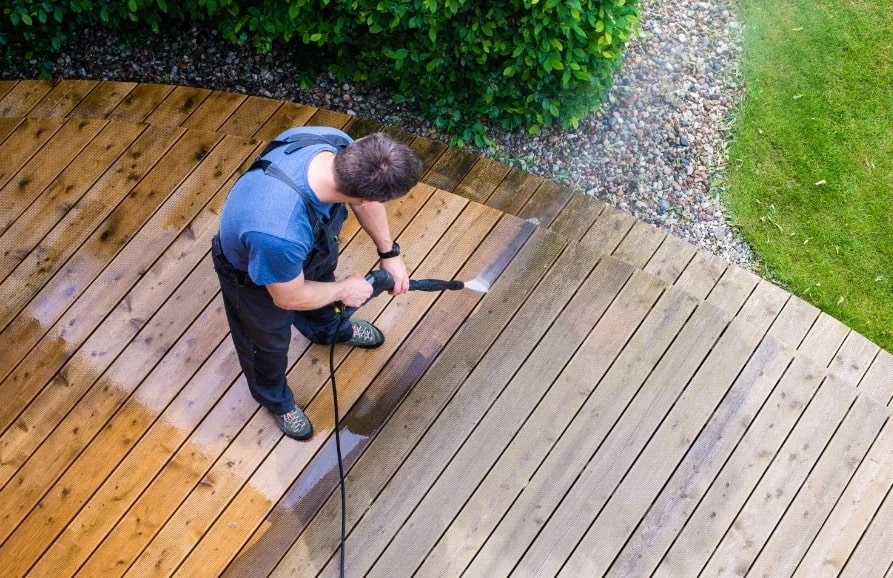 Adding a deck to your home can significantly increase its resale value. In some cases, many real estate agents that a handsome wood deck is responsible for a third of the value of the property. Not only that, but a well-maintained wood deck can be a beautiful and inviting addition to your home, perfect for entertaining guests all year round.
Adding a deck to your home can significantly increase its resale value. In some cases, many real estate agents that a handsome wood deck is responsible for a third of the value of the property. Not only that, but a well-maintained wood deck can be a beautiful and inviting addition to your home, perfect for entertaining guests all year round.
Pressure washing your deck regularly is the best way to keep it looking its best and increase its value. If you’re thinking about selling your home, or just want to enjoy your outdoor space to the fullest, be sure to keep your deck clean and well-maintained. Also, make sure to avoid common mistakes when cleaning a wood surface.
How to Keep Your Wood Deck Looking Gorgeous?
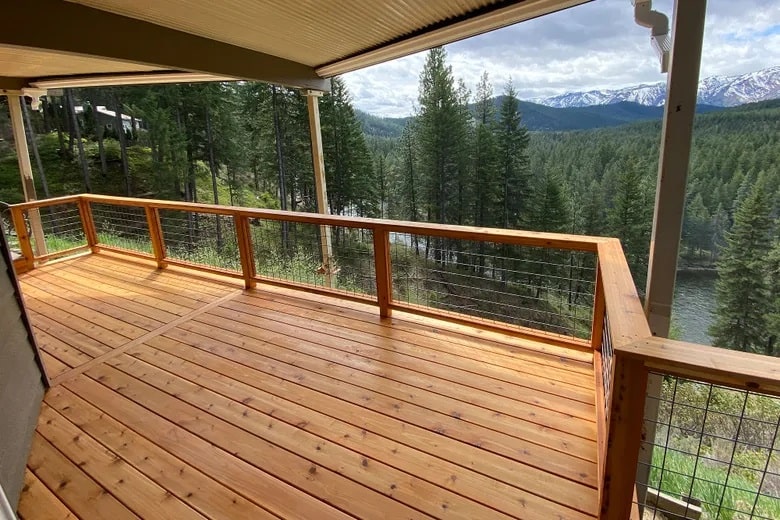 Wood, like any other home element, is prone to natural and man-made damages over time. This wear-and-tear course can make your home look dull overall. Keeping the deck clean using best maintenance practices is the best way to removing moss and making it look nice and shiny for years.
Wood, like any other home element, is prone to natural and man-made damages over time. This wear-and-tear course can make your home look dull overall. Keeping the deck clean using best maintenance practices is the best way to removing moss and making it look nice and shiny for years.
Cleaning treatments and brighteners often work nicely. If your deck uses South American hardwood like Tigerwood or Ipe, you can use a pressure washer. A basic garden hose with a sprayer can do the job well. But if you live in a place where the deck always gets dirty, having a pressure washer can always go in handy.
For decks constructed of processed or pressed wood, a simple pressure wash is sufficient. However, don’t get the nozzle too near to the wood. Similarly, it is best to begin with a low-pressure nozzle at an accessible location.
Cleaning Wood Deck with Pressure Washer
Here are the steps in pressure washing a wood deck:
Select the Right Tip and Pressure Level
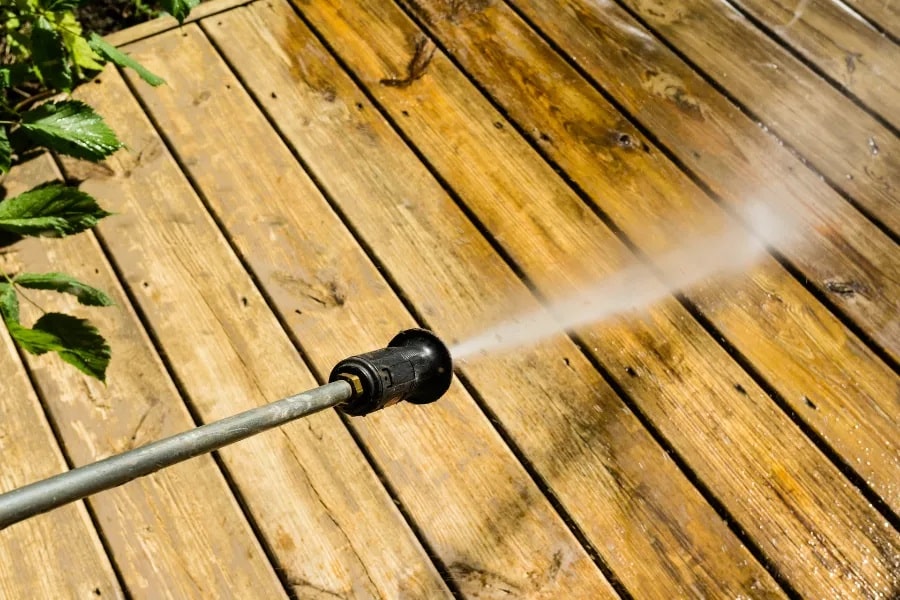 Select the suitable spray tip and pressure level depending on the cleaning task.
Select the suitable spray tip and pressure level depending on the cleaning task.
Choose the least amount of pressure possible. Softwoods can only take the pressure of 500 to 600 psi; tougher woods can withstand greater pressure, but not greater than 1,200 psi.
Use a tip spread of 40 to 60 degrees. If used properly, a revolving tip can also clean well.
Choosing a Pressure Level
It takes some practice before you can start using pressure washer properly. In an unnoticeable spot, like a stair tread or a nook, test the pressure to see if it’s enough. A stair tread can be cleaned quicker than a surface deck board if you need to change a piece of wood in case you damage it.
Begin with a 500 to 600 psi pressure. Gradually increase the pressure until you reach the optimal cleaning level you need. You can test the pressure first in an inconspicuous area.
Deck Pressure Washing
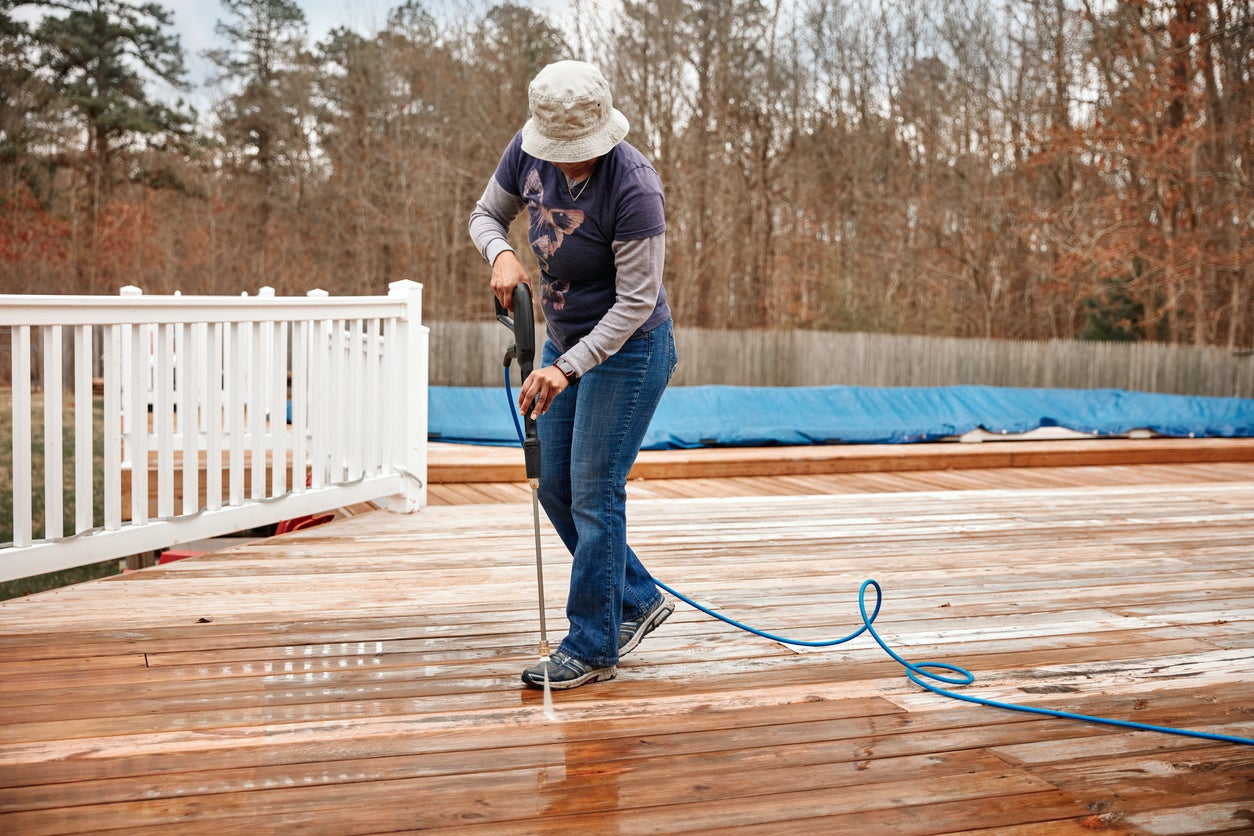 Press the trigger while having the tip of the washer a few feet away from the deck surface, then bring it closer as necessary. If you come neared than 6 inches, you can damage the wood.
Press the trigger while having the tip of the washer a few feet away from the deck surface, then bring it closer as necessary. If you come neared than 6 inches, you can damage the wood.
Wash the deck while avoiding the urge to rotate your arm. This will lead to an even distance between the spray head and the deck surface. By swinging your arm sideways back and forth, you can try to keep a uniform distance.
From the house going outwards, don’t forget wash the deck panels. Working with the grain, feather the spray vertically, conforming to the deck boards and gently overlapping each section. The aim is to attain equal cleaning without obvious cleaning borders or “hot spots.
If the wood is severely discolored or mildewed, a cleaning liquid containing sodium hydroxide can help bring its lost beauty. Find a product formulated for bleaching wood and use it together with a pressure washer. Make sure that your pressure washer can handle cleaning solutions.
Use the solution according to the manufacturer’s instructions. Apply it to the wood surface, then wash with plain water. Because stripper/brightener treatments tend to wrinkle up the wood fibers, you need to sand the deck entirely before re-staining or sealing it.
Sanding After Washing
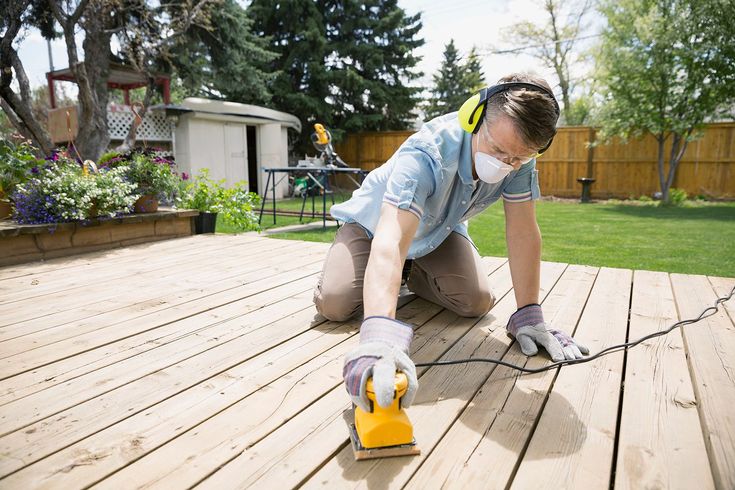 Power washing a deck should not deteriorate the wood or etch or dissolve the softwood fibers. When wood is wet, the fibers may get elevated, resulting in a rough surface. This is especially problematic on handrails, where the elevated fibers can cause splinters and will require sanding.
Power washing a deck should not deteriorate the wood or etch or dissolve the softwood fibers. When wood is wet, the fibers may get elevated, resulting in a rough surface. This is especially problematic on handrails, where the elevated fibers can cause splinters and will require sanding.
You have a few solutions for handling this problem. If you did pressure washing correctly, it would result in minimum damage and you might not do the sanding anymore. However, if you plan to refinish (re-stain or reseal) the deck, you must sand the whole surface to create smooth boards with minimal to no fragmenting. Grinding also opens up the pores of the wood, allowing it to absorb the sealer or stain evenly. Before sanding, ensure the wood is completely dry.
While sanding, avoid using fine sandpaper since it might clog the openings of the wood and hinder the stain/sealer from seeping in. Just use coarser than 100-grit sandpaper for the railing. Polish the deck surface with 60- to 80-grit sandpaper.
Final Words
Pressure washing your deck is a perfect way to remove dirt, grime, and mildew that cause the wood to deteriorate. It will also remove any stains or discoloration in the wood.
Pressure washing a wood deck is a simple procedure that you can do yourself. All you really need is a pressure washer and a good wood cleaner solution to brighten and protect the wood.